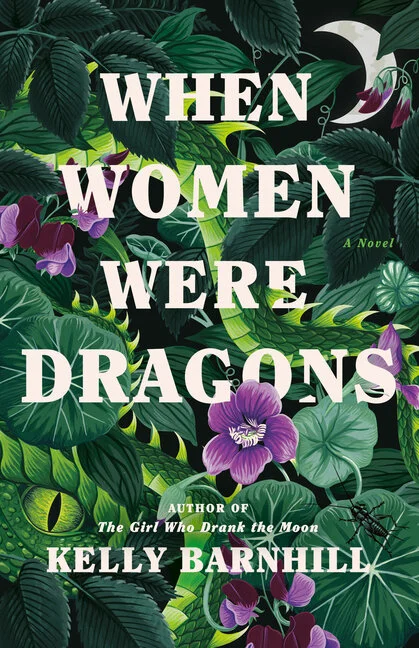The Dragon Within Us
/Book Review: When Women Were Dragons
When you read the words lush, rollicking, and imaginative to describe a new novel, it’s difficult to not read it. And when several people you admire as readers recommend it, then it turns into an impossibility, especially when the plot turns on the ability of women in the 1950s being able to turn themselves into dragons.
Such is the case with When Women Were Dragons published in May 2022. There’s a bonus for us Minnesotans. The author, Kelly Barnhill, lives in Minneapolis (her hometown) with her husband and three children; in 2017 she won the Newbery Medal for her fourth novel, The Girl Who Drank the Moon.
When Women Were Dragons, Barnhill’s first adult novel, is set in Wisconsin and centers on the life of a young girl, Alex Green, and the aftermath of the “Mass Dragoning” of women in 1955 when hundreds of thousands of ordinary mothers, wives, sisters – you get the picture – sprout wings, scales, and talons in retaliation for living in such confined, constricted roles in that decade. They take revenge and then fly away seemingly to never return again. Young Alex is left to help raise her cousin, whose mom has dragoned, under the illusion that the girl is her sister and to cope with her own increasingly frustrated and fragile mother. After six years, and herself still in high school, she takes on the burden and the joy of raising her cousin to adulthood all the while carefully nurturing her own innate sense of possibility.
The construct of the novel grabbed me from the beginning because I was born in 1950, a decade about which millions of people (mostly men, it’s been my experience) romanticize. My mother, mother-in-law, grandmothers, and women mentors, though, shared with me another side to the decade, one that saw a loss of freedom for so many women who were called to help run the country during World War II. To sustain the war effort and the country’s economic strength, women marched into factories, board rooms, universities, think tanks, intelligence agencies, decoding squads, the military branches – you name it, and women did it. When the war ended, though, these same women found themselves summarily dismissed and sent packing back to home and hearth. They felt marginalized, lost, and depressed (remember “mother’s little helper”, so readily prescribed to to women in the 1950s and 1960s?). Truth be told, the 1950s stood as a beacon decade for only a small percentage of the U.S. population.
When Women Were Dragons dips into fantasy and into history to show why so many women later began to push back, to be seen and treated as multi-dimensional, multi-faceted, multi-talented persons in addition to their “traditional” roles as wives and mothers. This combination provides a wallop of a narrative, and I found myself reading into the late night until the final page.
I won’t give away too much because this book is a page-turner. Yes, it contains sad and dark parts. It also, though, shows the beauty and benefits of intersectionality, the positive effects when choices are available for all, and the complex gender roles with which all of us humans grapple. And, yes, it asks us to question, once again, why women must constantly push back to live their best selves, to use ALL their talents, to lead and not just follow, to not be subject to a pigeon-holed life. The recent limitations being forced on women still say, “You cannot be trusted to know yourself or run your life.” Hog wash.




